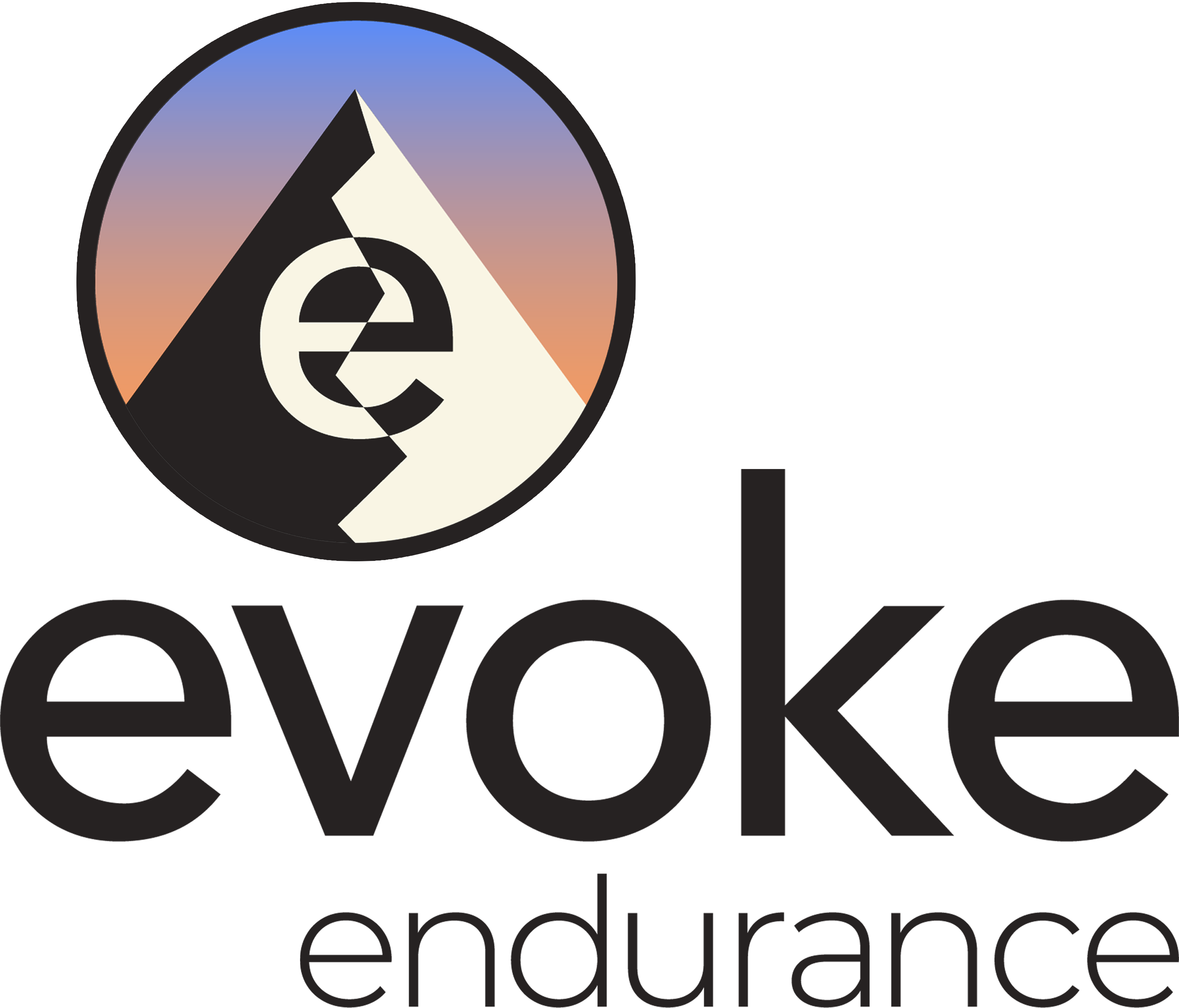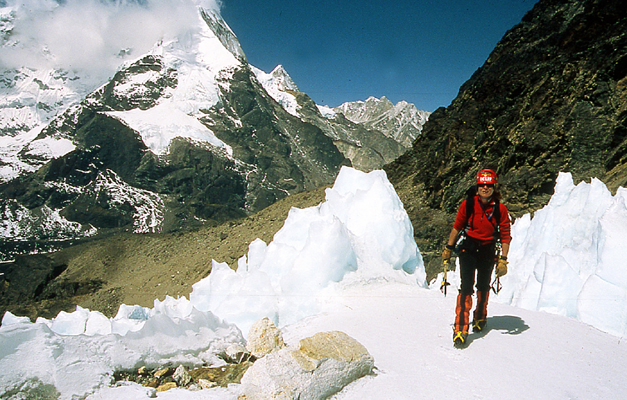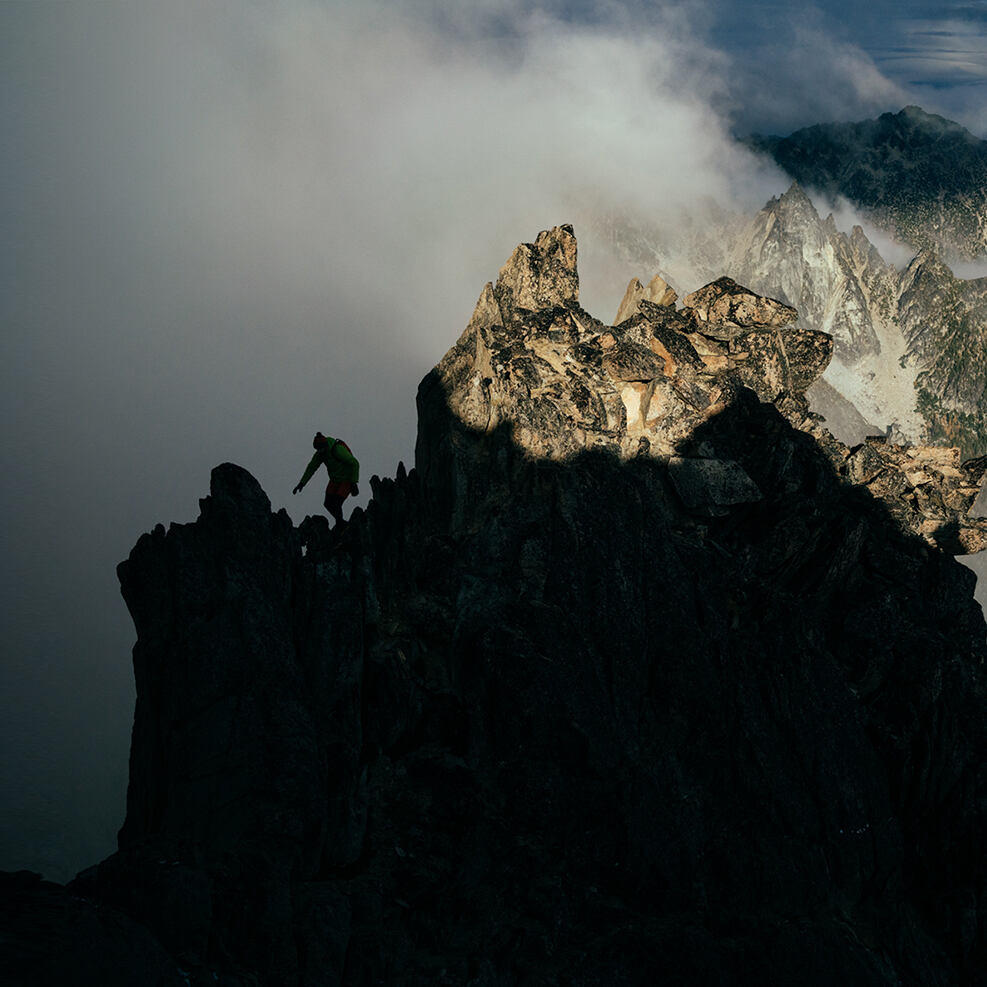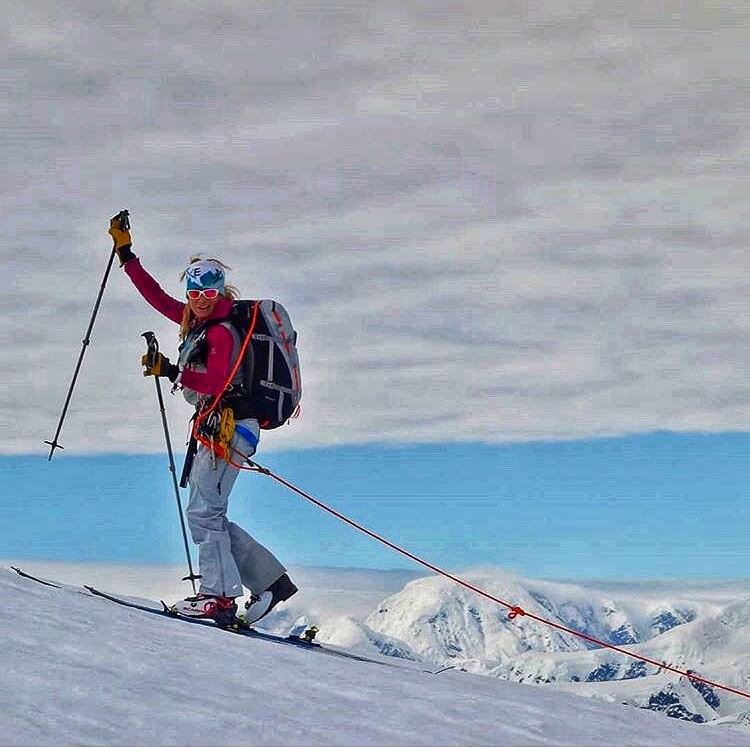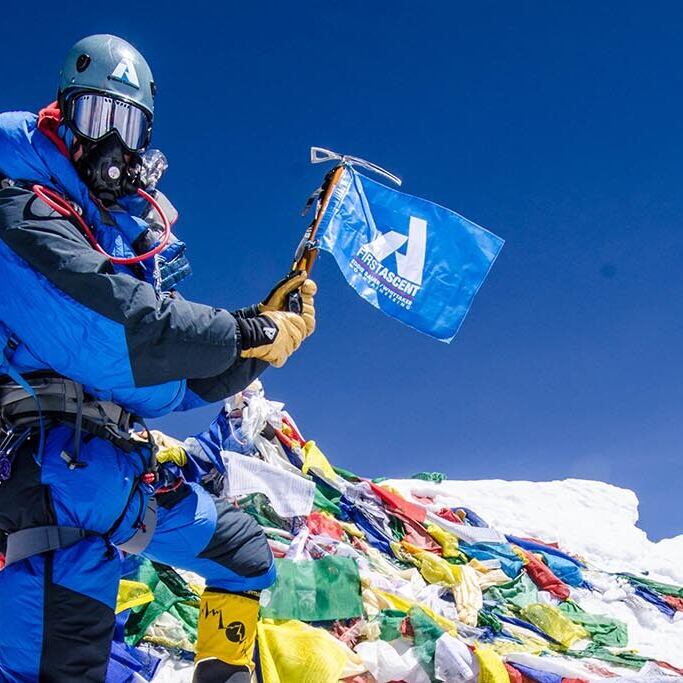Training for Mountaineering
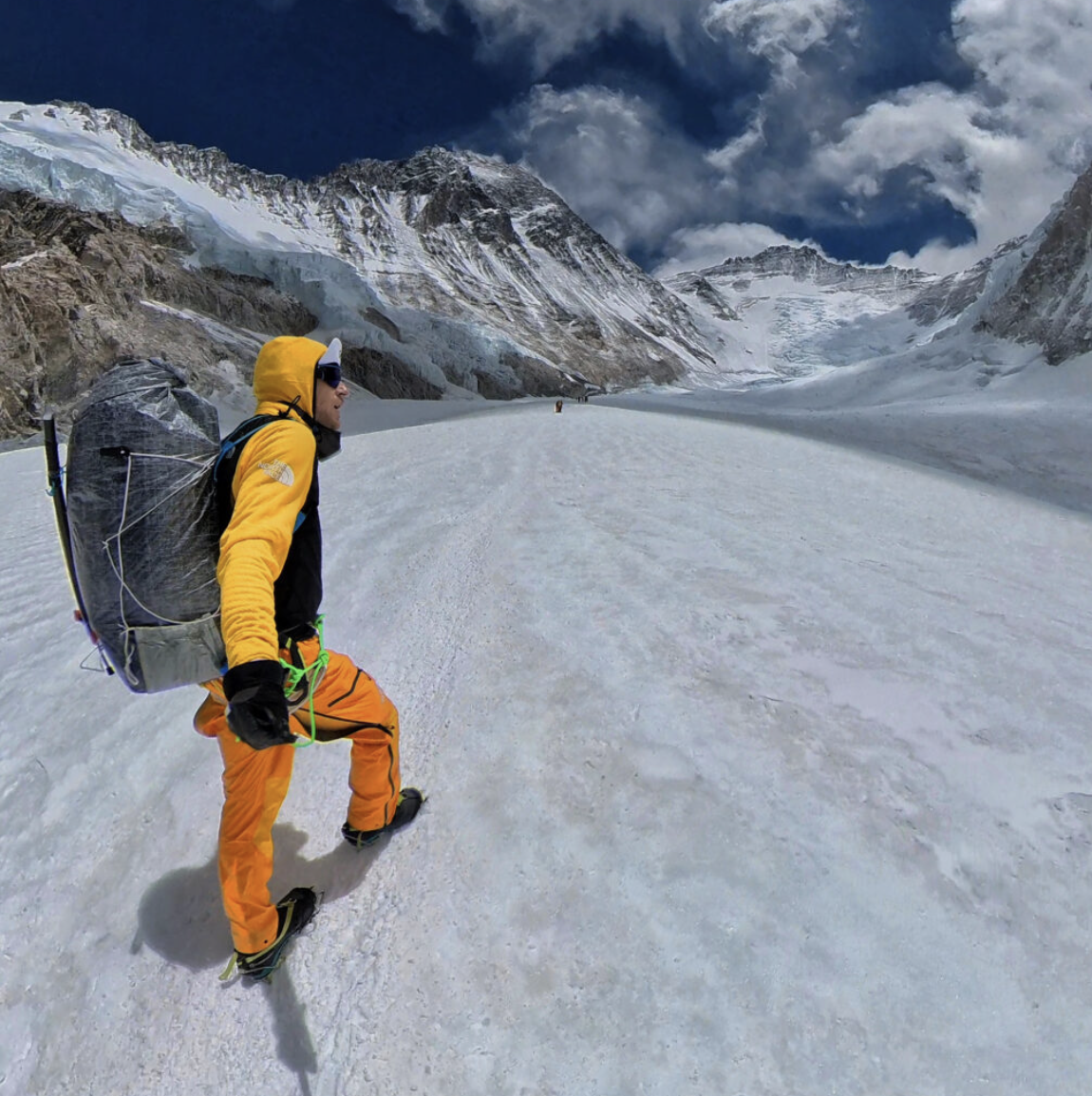
Regardless of the mountain and route you plan to climb, training for mountaineering requires developing a diverse set of skills and fitness components.
Training for mountaineering encompasses many components: Aerobic capacity, upper and lower body strength, core strength, mobility, and balance are all important elements of the fitness profile you need to develop to be successful in the mountains. Many mountaineering objectives require you to sustain your performance for days, weeks, or months on end. Proper training, like the sport itself, takes a great deal of patience and commitment.
In the mountains, fitness equates to safety. The faster and more efficiently you are able to move, the safer you will be, period. Some routes offer only limited safe locations for breaks, and you often have to climb at a constant pace for several hours between snacks and sips of water. Objective hazards, such as rockfall and avalanches, can threaten sections of the route. Sometimes the only safe strategy for moving through these areas is to limit the time you spend in them, meaning you have to go as fast as you can without burning yourself out for the rest of the climb.
Unlike organized races, mountains don’t offer an easy exit if things go wrong. You can’t duck under the ropes and hobble into a medical tent if you are exhausted or injured. You have to rely on yourself and your teammates to get you up and, most importantly, down the mountain alive. As a member of a rope team, it’s your responsibility to make sure you are fit enough to complete the objective, and that you have plenty of fitness reserves to support your teammates if unexpected issues arise, as they often do in harsh mountain environments.
The process of developing your mountaineering fitness takes time. Thankfully, improving your fitness can go hand in hand with learning the technical skills and gaining the on-mountain experience you need to become a proficient mountaineer. As your fitness profile grows, so should your rope skills, crampon technique, and technical repertoire. On top of that, your training efforts will take you into some beautiful mountain landscapes, fueling your spirit and motivating further explorations. If you can learn to love the process, finding joy and utility in a consistent routine, you will inevitably reach your goals.
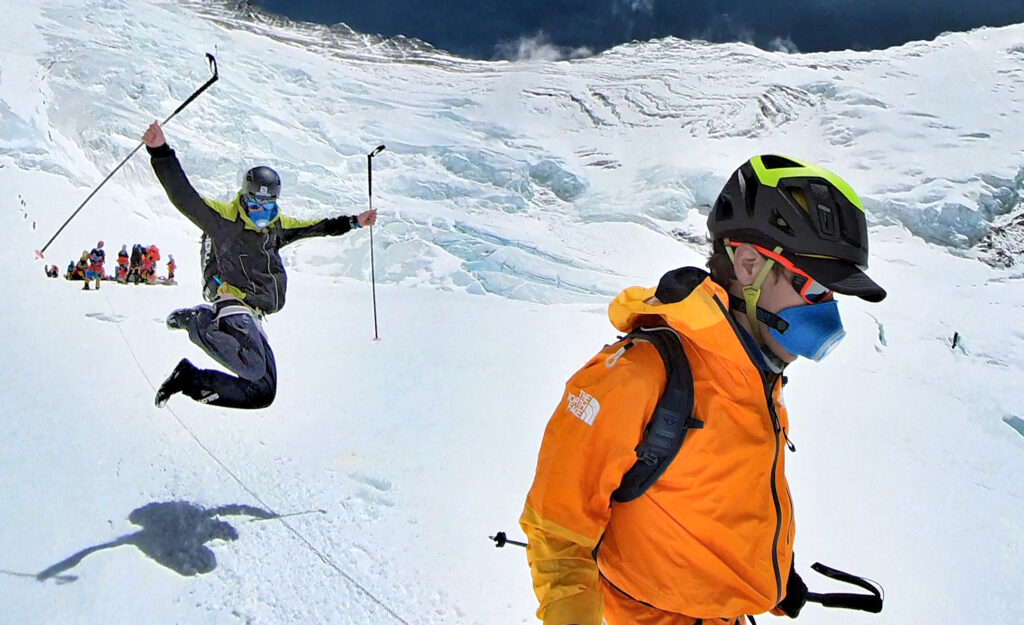
Aerobic Capacity
The most important component of endurance fitness is aerobic capacity. Not only does your aerobic capacity give you the ability to complete long efforts without succumbing to fatigue, but it also supports your performance during higher-intensity work and significantly contributes to quicker recovery.
Given the importance of aerobic capacity, it should come as no surprise that the majority of training hours throughout all phases of a workout plan are devoted to improving aerobic capacity, also referred to as the “aerobic base.” Aerobic base training supports and counterbalances other layers of fitness. Professional endurance athletes commonly spend 80-95% of their total training hours on aerobic base training. Entry-level athletes will benefit from training in a similar fashion.
Assessing your aerobic capacity should be one of the first steps you take when embarking on a training plan. People with a history of performance in endurance sports may have built up their aerobic capacity already, but the majority of folks who are new to mountaineering do not have an adequately developed aerobic capacity to support the back-to-back multi-hour days that come with mountaineering. People who have spent much of their fitness life doing high-intensity workouts, such as CrossFit or HIIT, have honed their ability to exert short and powerful bursts of energy, the opposite of what is needed for endurance sports. Spending a lot of time in the gym doesn’t mean you have the requisite fitness to climb a big mountain. In fact, the opposite may be true.
The energy needed to contract your muscles and move your body comes from two metabolic pathways: aerobic and anaerobic. The aerobic metabolic process relies on oxygen and is fueled mostly by fat during these long, lower-intensity efforts. The anaerobic metabolic process does not require oxygen and is fueled by breaking down sugars to produce short bursts of power. The cellular and muscular componentry for each process can be trained, but the two have a rather competitive relationship. Training one pathway tends to diminish the other pathway and vice versa. A history of high-intensity training without enough aerobic base training to complement it has led many people to develop an issue known as Aerobic Deficiency Syndrome (ADS). ADS is more common than you might think. Athletes who perceive themselves as being fit might be surprised to discover they are aerobically deficient.
Identifying and correcting ADS is an essential step for any athlete with endurance goals.
Moving the needle on your aerobic capacity can be slow and arduous. The only reliable method is to do a high volume of aerobic exercise at or below your aerobic threshold (AeT).
You can determine your aerobic threshold heart rate using a heart rate drift test or the MAF 180 Formula, which simply subtracts your age from 180.
You can supplement tests and formulas with no-tech gauges, such as being able to breathe through your nose and the ability to carry on a conversation while exercising. Regardless of how you identify your exact AeT, the key to developing your aerobic capacity is to train at intensities at or below this threshold. In other words, you must log a lot of hours of low-intensity training. There are no shortcuts!
The first phase of a proper endurance training plan is often called the “patience phase.” It can be frustrating and monotonous, especially for folks who are accustomed to the feeling of high-intensity workouts. Trust the process and give your body time to adapt. As you progress, reassess your aerobic capacity often. Seeing quantifiable improvements can be the carrot you need to stay motivated.
Many types of aerobic activity are beneficial for improving your aerobic capacity, but since you are training for mountaineering, we encourage athletes to focus primarily on upright, weight-bearing activities such as hiking and running. Prioritizing sport-specific activities that closely resemble mountaineering will produce fitness gains that directly transfer to your event. Biking and swimming, for example, might make you more aerobically fit, but only a portion of the hours you spend training will transfer to the fitness you need to climb a big mountain. Being efficient with your time is part of a successful training regimen. With that being said, light recovery sessions where the goal isn’t to produce a major training stimulus can be a good time for different activities. An easy bike ride, swim, row, or other aerobic activity can be a refreshing compliment to a heavy dose of hiking and running.
Try to find enjoyment in the feeling of aerobic base training because no matter what phase of a training plan you are in or how strong an athlete you are, it is always an essential element. Use the opportunity to get to know your favorite local trails and visit some locations farther from home.
If you’re stuck on a treadmill or a stairwell in a skyscraper, we recommend finding a good podcast or audiobook. And remember, you have to train slowly to go fast!
Capacity vs. Utilization Training
One important concept the coaches at Evoke Endurance use when training athletes is that of Capacity and Utilization Training. Bob Bowman, the legendary coach of Olympic swimmer Michael Phelps, came up with these terms to describe two different methods of training that can be applied in different phases of a training regimen.
Capacity Training:
Training that improves the long-term performance potential of an athlete, possibly at the expense of near-term performance. Another way to think about Capacity Training is that it is designed to focus solely on the individual components of fitness required for the event being trained for. Aerobic base training sessions are an example of Capacity Training because they place the training stimulus on an athlete’s aerobic capacity without targeting other fitness components. The same can be said of general strength training, like you would do in a gym using a barbell. Capacity Training is generally done in the earlier phases of a training plan.
Utilization Training:
Training that improves the near-term performance results of an athlete, possibly at the expense of long-term performance potential. Utilization Training can also be thought of as training that combines several different fitness components into a single workout so that the training more closely mimics the event being trained for. Muscular Endurance sessions where you don a very heavy pack and hike steeply uphill (or on a Stairmaster) for an hour are an example of Utilization Training. Utilization Training is generally applied in the later phases of a training plan when an athlete’s goal event is drawing nearer.
In his detailed look at Capacity and Utilization Training, Evoke founder and coach Scott Johnston writes about the differences in these training methods, how they affect an athlete’s performance, and how to apply them in different training cycles to produce the best results. Mountaineers who are preparing for big climbs would be smart to study these ideas and incorporate them into their training plans.
Strength
You don’t have to look like Sylvester Stallone in Cliffhanger to be able to climb a mountain. On the contrary, if you assess the bodies of the best and fastest mountaineers, you will see that they are lean and relatively small-muscled. Working on your bench press or bicep curl isn’t going to help you ascend Mount Rainier or Mount Everest. Most traditional weightlifting exercises won’t benefit you and might even be detrimental. Bulky muscles will weigh you down and place higher demands on your cardiovascular system to pump oxygenated blood into all that musculature. Improving your strength in sport-specific movement patterns without adding bulk is the goal.
Fundamentally, the act of climbing a mountain requires an athlete to place one foot higher on a slope than the other foot and stand up on a single leg. During the descent, this motion is obviously reversed. There are many other movement patterns used during a climb, such as stepping laterally across a steep face, pulling on a fixed rope, or bending over to pick up a heavy backpack. Steeper or vertical terrain places greater demands on the upper body. The basic single-legged propulsive movement patterns, however, are relatively simple and where the bulk of your strength training time should be focused. Exerting greater force within these movement patterns, and being able to replicate that same force for hours and days on end, is what will make you a faster mountaineer.
We have put together two documents that cover the exercises we consider to be most important for mountaineers. This is not a comprehensive list but provides a good starting place for many athletes.
Mobility and balance are also key elements of mountaineering strength. Both are trainable and shouldn’t be overlooked. You might be muscularly strong, but if this strength is limited to a small range of motion, less than you need on your climb, it won’t be particularly helpful. Similarly, if you can squat 500 pounds but can’t balance on a single leg, you will likely struggle in the mountains. One way to avoid these pitfalls is to start by completing strength workouts with body weight only, focusing on a full range of motion and clean form. Once you are strong enough to do every exercise perfectly, then start to add weight or resistance. Yoga, balance routines, and other mobility work can be a great supplement to a training plan.
Core strength is another important factor in the mountains. A strong core contributes to everything you do. It helps you lift your knees when stepping up a slope, carry a heavy backpack, pull yourself up a steep face, and absorb impact on the descent. But you don’t need to have a six-pack to climb a mountain. True core strength is different from rippling abs. The exercises we recommend are designed to strengthen the deep internal muscles that will create a notable difference in all your outdoor activities.
One main benefit of strength training, if done properly, is that it makes you more durable and injury-resistant. Muscles are interdependent, meaning they have their own function and purpose but also rely on and influence other muscles throughout the body. Isolating and working on small, overlooked muscles that aren’t activated in compound movements can encourage symmetry and prevent overuse injuries. For example, working on the abductor muscles in your hips will lead to better hip stability, which in turn supports a cleaner form in your lower legs and prevents knee injuries. Similarly, strengthening the muscles in your posterior chain can alleviate some of the imbalances that might develop from a sport like mountaineering, which places most of the muscular strain on the front of the body.
Our mountaineering training plans have three phases of strength training: general strength, max strength, and Muscular Endurance.
The general strength phase is where athletes develop the foundational strength upon which the other two layers are built. Focusing on clean form and a full range of motion without adding too much resistance or weight is important in this first phase.
The goal of the max strength phase is to improve the strength in your existing musculature without adding bulk. The basic idea is to increase the amount of weight your muscles can move across sport-specific exercise patterns. The best way to do this is to add progressively heavier weight to each exercise while doing a relatively low number of reps and sets. This won’t produce the same burn, exhausted feeling, or subsequent soreness that you might be used to from other strength workouts. But if you stick with this work and get enough recovery, you will see your weights begin to increase.
This means you are also increasing your strength reserve. Your strength reserve is the difference between the maximum strength you have to perform a given movement and the strength you need to perform the same movement during your event. In other words, if you need to carry a 50-pound backpack up a mountain and you can perform step-ups with 100 pounds, your strength reserve is 50 pounds. In general (with a few caveats), the bigger your strength reserve, the easier it will be to complete your event.
Muscular Endurance is the final, most important layer of strength training. Because it is a complex subject and is so critical for endurance fitness, we decided it needed its own subheading.
Muscular Endurance
While it’s important to be able to step up on one leg with more weight than you need to carry (max strength), it’s far more important to be able to step up on that leg ten thousand or more times, with the last step exerting the same powerful force as the first. Muscular Endurance (ME) is The ability of a muscle to exert a relatively high percentage of its maximum force for many repetitions of the propelling movement. In other words, improving Muscular Endurance will help you go faster for longer.
In his deep dive into Muscular Endurance, Scott Johnston writes about the physiology of ME, explaining how muscle types come into play and looking back at the history of ME training. The article even provides detailed workout protocols for gym-based and outdoor ME training sessions.
Mountaineers must keep in mind that ME training is most effective when it is layered on top of a large aerobic capacity and strength reserve. Because of the muscle types involved, aerobic base workouts need to continue with the same volume and regularity as in earlier phases of training.
ME workouts are an intense training stimulus and need to be moderated with adequate rest and active recovery sessions if an athlete is going to make consistent gains. Typically only one ME workout per week is all that is needed to go faster for longer in the mountains.
Since ME is typically the final phase of a training plan, leading directly into your taper, it’s imperative not to overdo it. The gains you experience from this type of training can be rapid and impressive, which can lure you into thinking more of it and will make you even stronger. Be wary: Too much could easily lead to overtraining, burnout, or injury, which are the last things you want right before your climb.
Tapering
Proper tapering for any athletic event is as much art as science. Each event requires a slightly different approach, and every athlete reacts differently. In general, the goal is to balance rest and recovery with continued exercise, maintaining an athlete’s fitness while allowing their body to reach a state of equilibrium.
In this in-depth discussion of tapering techniques, Scott Johnston writes about how to make the most of tapering, when to apply a taper, and some general guidelines to keep in mind.
For mountaineering objectives with extended travel time and long approach treks (e.g., Everest, K2, Aconcagua), one can train almost right up to the point of departure. The first part of the trip becomes a de facto taper. In this case, a 48-72 hour stretch of very light training will make sure the athlete is rested enough that their immune system is strong and will allow a little extra time for last-minute packing, family, and work responsibilities.
For trips where you need to hit the ground running (or dragging a sled, like Denali) will demand a more thorough rest beforehand. For most trips of this type, a 1-2 week taper is appropriate. This period should look similar to your normal training weeks, but you should reduce the volume of everything by about 50%. A good gauge for this is your normal consolidation or recovery weeks during training. Do you feel quite rested and ready to work hard after a consolidation week? Or do they leave you feeling flat, and it takes a few workouts to get going again? This is good information to take note of and use to tailor the taper to your individual needs.
One thing that you should consider in almost all taper strategies is removing any Muscular Endurance training for the last couple of weeks before launch. ME training has a very high recovery demand and will typically yield the best results with a slightly longer taper than other types of training.
Technique
For athletes and coaches alike, the discussion of preparing for endurance goals can get solely focused on the minutiae of training to be as fit as possible. While this is obviously hugely important, it is not the only factor that is firmly in your control. Another big factor in your success is being proficient in the techniques required for your mountaineering goals. This can be thought of as the ability to effectively and efficiently apply your hard-won fitness to technical mountain terrain. Modest gains in movement efficiency will result in a huge reduction in energy expenditure over the course of a long day of climbing in the mountains. We have seen many instances of athletes with great training data who fail miserably on their climbs due to a lack of technique. Don’t let that be you!
Working on climbing techniques is an ongoing and lifelong pursuit. For those who don’t live in areas where the desired type of climbing is readily accessible, it will require some travel and dedication to get into the type of terrain where you need to practice. If you are new to mountaineering, one of the best ways to learn technique is to spend some time in the field with a knowledgeable guide who can safely push the boundaries of your climbing skill, demonstrate proper techniques, and help correct errors in real-time. Many guide services offer introductory mountaineering courses that will teach you the basics, such as walking in crampons, using an ice axe, and managing the rope. Knots, pacing, glacier travel techniques, and crevasse rescue techniques are usually covered in these courses as well.

Once you’ve learned the basic techniques, the goal is then to refine and expand your knowledge on steeper, more technical terrain. Ultimately, you want to be proficient in moving through obstacles that are similar to what you will encounter on your goal climb. If you are climbing Mount Everest, for example, it may be smart to practice walking across a ladder wearing crampons. You can do this by suspending a ladder between two objects a foot or so off of solid ground. Gaining confidence on the ladder in a controlled setting will help you move more efficiently over the ladders in the Khumbu Icefall, where speed and technique are essential for safety. Learning how to ascend and descend fixed ropes on steep terrain will also benefit you on Everest.
Consider what event-specific skills you need to develop. Should you practice hauling a heavy sled while wearing snowshoes or skis for the lower portions of Denali? Do you need to practice walking on talus or loose rock while wearing crampons for the Disappointment Cleaver on Mount Rainier? What about climbing lower fifth-class rock while wearing mountaineering boots for the Owen-Spalding route on the Grand Teton? Whatever your goal is, identify the specific techniques you need and use some of your training sessions to practice them.
Another way to build your repertoire and improve your technique is to create several smaller, intermediate climbing goals that have similar technical demands to your ultimate goal. This creates litmus tests along the way and gives you a chance to define and refine areas of movement skill that may need some polishing. Pursuing intermediate goals will also bring you to some amazing mountain landscapes. Using your training sessions to experience the beauty of nature will feed your soul and motivate you to continue exploring.
Mental Prep
Climbing mountains is as much a mental game as well a physical one at times. No matter how fit you are, reaching the summit and getting down will not be easy. Setbacks and unexpected obstacles will inevitably arise along the way. The challenge and the uncertainty of the outcome are what attract many people to mountaineering. If it were too easy, we probably wouldn’t feel the sense of accomplishment we do upon being successful. Some of the most rewarding climbing experiences are often some of the hardest.
One side benefit of doing a lot of aerobic base training is that long, slow efforts naturally increase your tolerance for suffering. Scientific studies in the field of endurance have demonstrated that prolonged exercise at relatively low intensities causes adaptations in the brain that increase fatigue resistance. When you exercise for extended durations, your brain is required to stay focused on the task the whole time. This is part of why very long efforts are more mentally challenging than shorter ones. By completing long aerobic base hikes or runs, you are not only developing your aerobic capacity but also training your brain to be more resilient.
Mountaineering is often uncomfortable. Conditions might be extremely cold or scorchingly hot, sometimes within minutes or hours of each other. Sunburn and frostbite can happen simultaneously. Heavy backpacks dig into hips and shoulders. Feet are pounded against stiff boot soles for hours and days on end. High altitudes sap the body of energy and slow down recovery. Creature comforts like warm showers, comfy beds, and freshly laundered clothing don’t exist in the mountains. Some athletes will take measures to train themselves to be comfortable with discomfort. Wearing mountaineering boots and carrying a heavy pack during training sessions is one way to get ready. Sleeping on a thin pad on the ground or in the snow is another. Old school climbers would even swim in frigid water to prepare for the cold and sit in saunas to train for the heat. We wouldn’t necessarily recommend the last two practices, but we do encourage you to spend some time toughening up your body and mind before your trip.
A lot has been written about the power of belief. Believing in yourself and your abilities can result in some truly amazing achievements. Some of the best climbers we have encountered aren’t the most physically gifted or technically astute people in the room; they simply believe without any doubt that they can complete their goal. Similarly, a very fit athlete who lacks a sense of belief in themself and an innate drive to complete the endeavor will often perform worse than a less fit athlete who simply wants to reach the summit and believes they can get there. Visualization techniques, meditation, and other mental practices can be beneficial in building your inner belief and self-confidence. Without wading into a nebulous discussion of the many ideas out there, we suggest exploring some different practices in a way that feels right for you.
Conclusion
If you’ve read this far, you’ve already taken a positive step to improve your performance in the mountains. Part of being a successful mountaineer and endurance athlete is continuing to learn, whether it be improving your skills and techniques, strengthening your mind, or implementing the best training methodology out there.
Our website is chock-full of valuable knowledge and is being updated regularly with new articles and content that will help you be a better mountaineer.
Whether you are a seasoned alpinist striving for a cutting-edge first ascent or a new mountaineer dreaming of your first climb of a glaciated peak (or anything in between), please don’t hesitate to engage in our forum or contact us with any questions you might have. We wish you the best of luck on your climb! Onward and upward!

